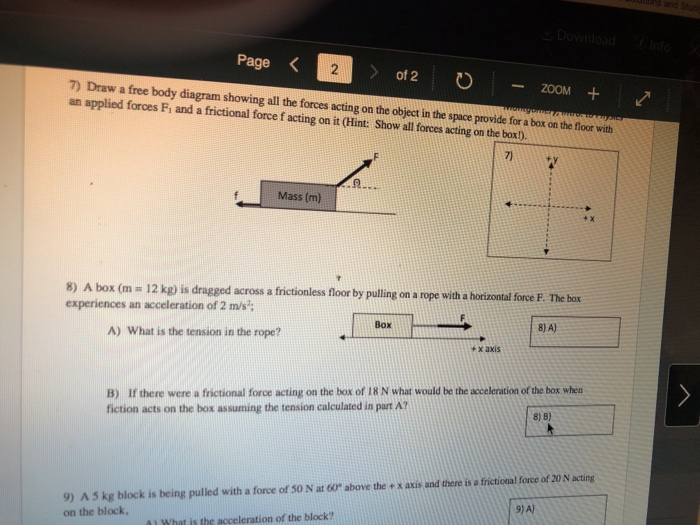Use the following variables as necessary.
A box is dragged across a floor.
A box with mass m is dragged across a level floor having a coefficient of kinetic friction μk by a rope that is pulled upward at an angle above the horizontal with a force of magnitude f.
D first increases then decreases.
A rope is tied to a box and used to pull the box 1 7 m along a horizontal floor.
A box is dragged across a floor by a rope which makes an angel 45 degree with the horizontal the tension in the rope is 100n while the box is dragged 10m the work done is.
Kinetic friction force f k tension t weight w normal force n thrust f thrust.
The box dragged at a distance of 10 m.
The rope makes an angle of 30 with the horizontal and has a tension of 5 n.
A box is dragged a distance d across a floor by a force which makes an angle with the horizontal as in fig.
A box is being dragged across the floor at a constant speed by a rope pulling horizontally on it.
Tension in the rope t 100 n.
A box with mass m is dragged across a level floor having a coefficient of kinetic friction µk by a rope that is pulled upward with an angle θ above the horizontal with a force of magnitude f a in terms of m µk θ and g obtain an expression for the magnitude of force required to move the box with constant speed.
If the magnitude of is held constant but the angle is increased the work done by a remains the same.
Friction is not negligible.
A box with a mass of 50 kg is dragged across the floor by a rope which makes an angle of 30º with the horizontal.
We know that the work done is equal to the product of force displacement and the angle between them.
It is given that a box is dragged across a floor by a rope which makes an angle of 45 with the horizontal.
Part a identify all the forces acting on the box.
A in terms of m μk θ and g obtain an expression for the magnitude of force required to move the box with constant speed.
G m mu k for μk and theta for θ.
Mathematically it can be written as.

